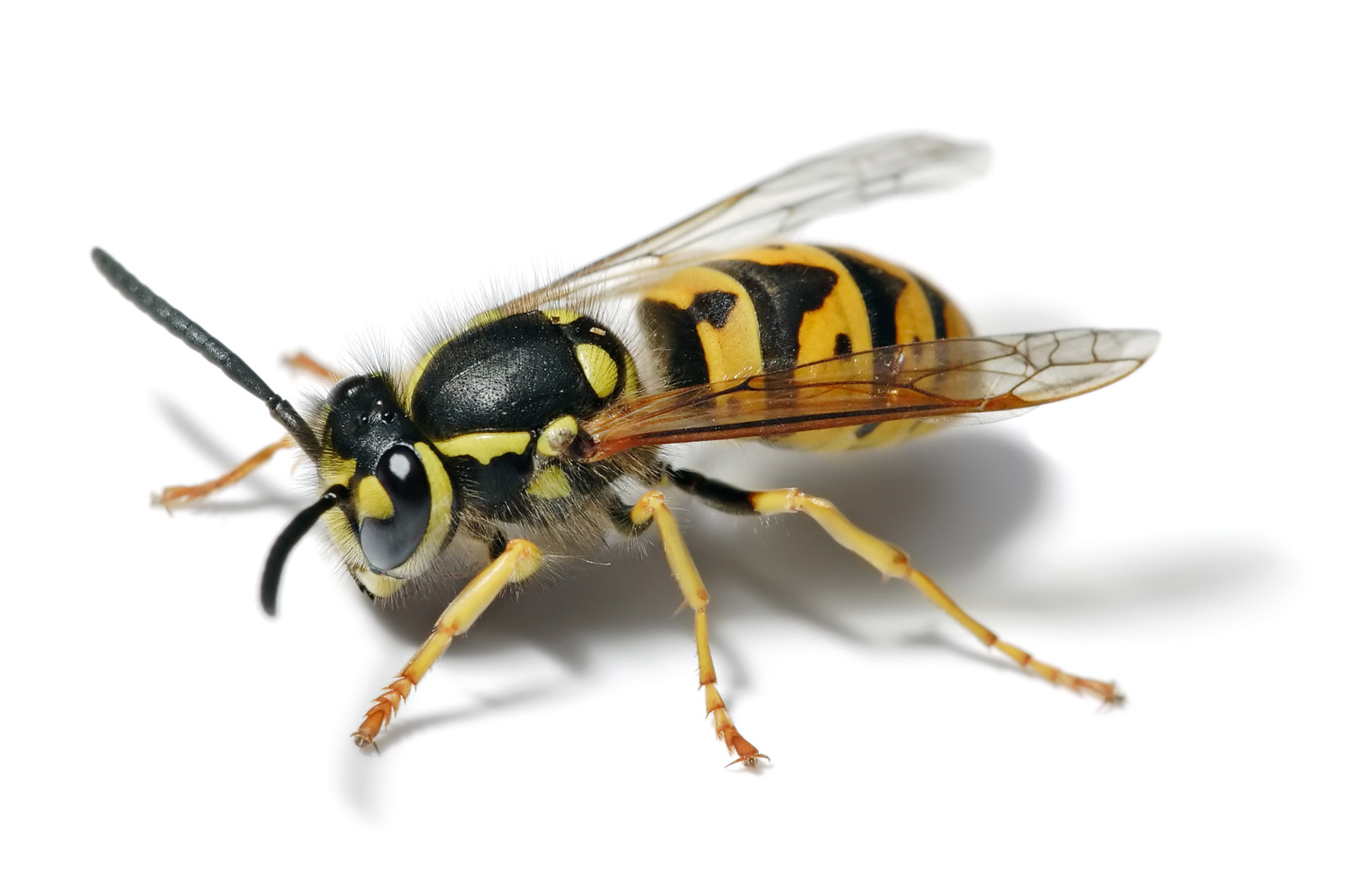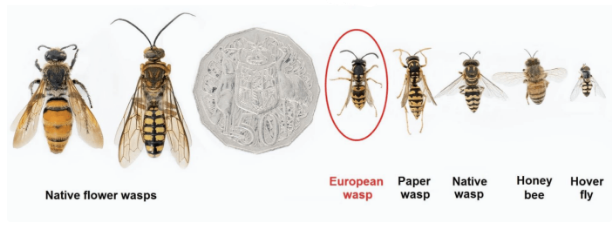European Wasps
European wasps were introduced into Australia in 1977 and have since then been considered a pest. European wasps enjoy our climate and this has aided in their spread. European wasps are a nuisance and care should be taken when European wasps are around. Don't leave pet food lying around and cover up all sweet drinks and food.
European wasps are a brighter yellow than honey bees and don't have a hairy body.

To compare the European wasp to other wasps, please see the diagram below:
Nests
If you have a large number of European wasps hanging around your pet food or water bowls then it usually means a wasp nest is nearby as European wasps usually only travel 50 to 250 metres from their nest. They will most likely make their nest in the ground however sometimes it can be above ground.
When making their nest in the ground any concealed site may be used. It may appear as a small hole dug in the ground, around the base of a tree, along retaining walls, in rockeries, and in rubbish or compost heaps.
If they are located above ground they may be in the roof of the house, the wall cavity or in any other sheltered parts of the building.
What to do if you see a European wasp nest?
If you find a European Wasp nest on Council land, please let us know so that it can be destroyed. The destruction of any European Wasp nests on private land is the responsibility of the landholder at their own cost.
For any further advice contact Council's General Inspector on 8752 1044.
What if you can't see the nest?
If you have European wasps hanging around your home then there will most likely be a nest nearby. European Wasps generally don't stray further than 250 metres from their nest so the best way to find the nest is to follow the direction they are travelling.
Warning: European Wasps can become extremely aggressive if the nest is disturbed. Do not attempt to destroy the nest yourself.

